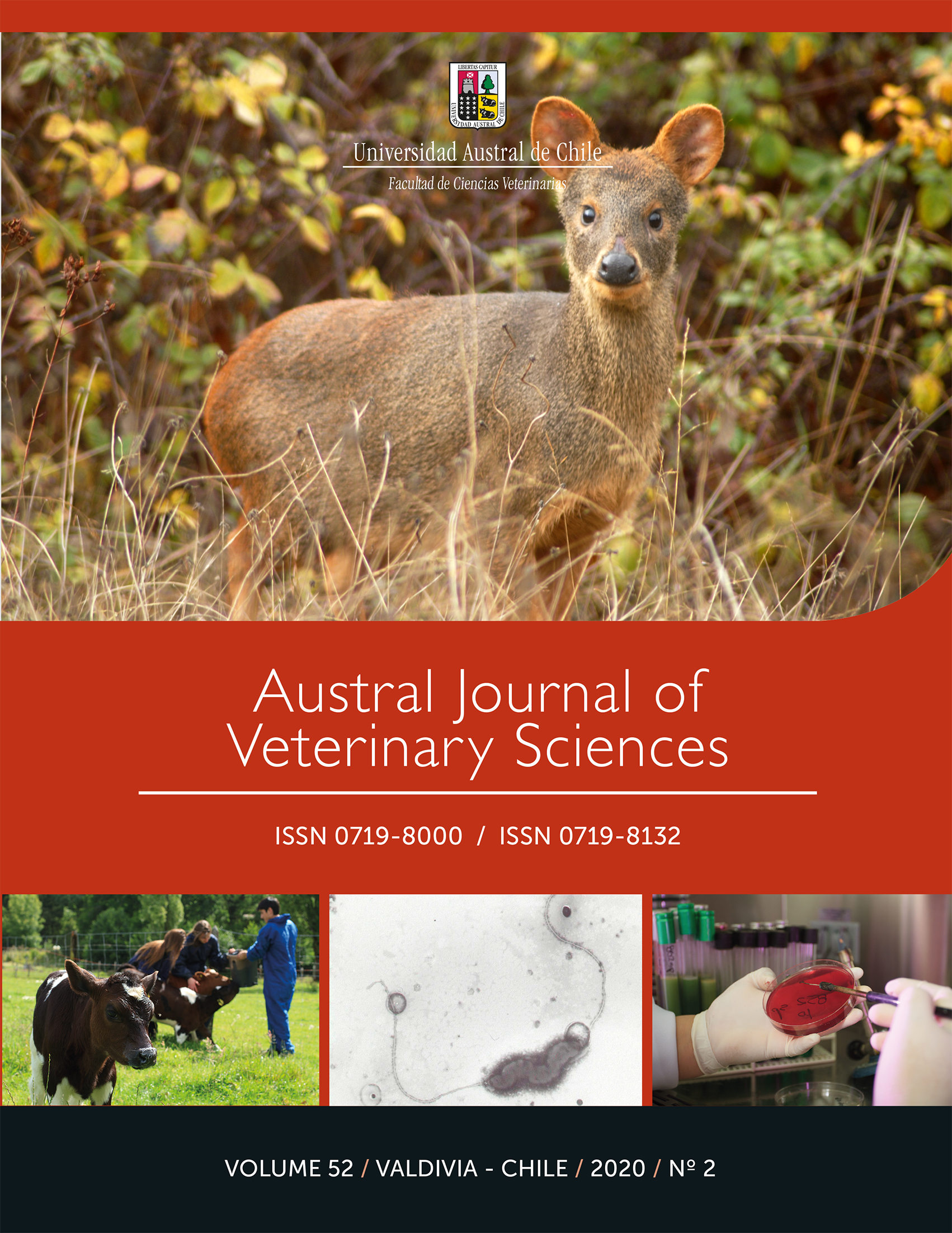Rumen fermentation and diet degradability in sheep fed sugarcane (Saccharum officinarum) silage supplemented with Tithonia diversifolia or alfalfa (Medicago sativa) and rice polishing
Main Article Content
Abstract
The objective of this study was to evaluate ruminal fermentation (i.e. pH, ammonia, and volatile fatty acid concentrations) and in situ degradability of diets in sheep fed sugarcane silage (SCS) supplemented with Tithonia diversifolia (Td) or alfalfa (Medicago sativa) hay (A), with or without rice (Oriza sativa) polishing (RP) as an energy source. Four Blackbelly sheep (35 kg average body weight) with rumen cannula were used. The experimental diets were (g/kg of dry matter): Diet 1) SCS (686) + Td (294), Diet 2) SCS (460) + Td (226) + RP (294), Diet 3) SCS (637) + A (343), and Diet 4) SCS (441) + A (245) + RP (294). The remainder (20 g/kg of dry matter) was composed by minerals supplement and salt. Samples of diets were incubated into rumen for 3, 6, 9, 12, 24, 30, 36, 48, and 72 h to determine in situ degradability. Data were analysed with a linear mixed model. The lamb, period and lamb nested in period*diet were considered as a random variable. The inclusion of RP improved the degradability of diets and ammonia production in the rumen. The acetic, propionic, and butyric acid concentrations (mmol/100 mL) in rumen increased (P<0.03) when diets with alfalfa and RP were provided. The degradability of diets based on sugarcane silage supplemented with either alfalfa or Tithonia diversifolia was improved (P<0.05) with the rice polishing inclusion, with no difference (P>0.05) between these forages. In conclusion, energy supplementation, not necessarily from starch, is important to improve rumen fermentation and degradability of diets based on sugarcane silage.

